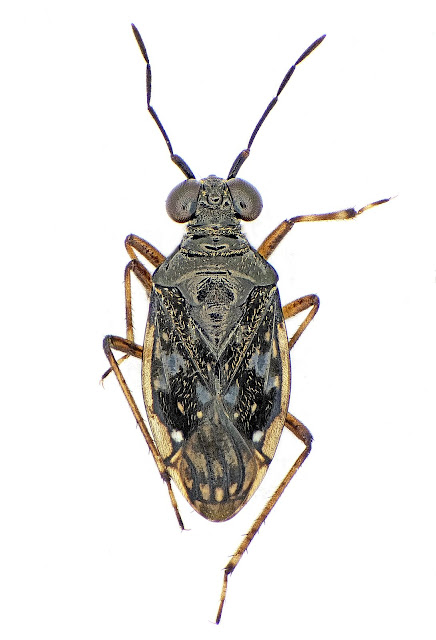
After two weeks of illness, storms, February rainfall now approaching three times the monthly average figure and days and days of endless R, I was determined to get out and do some fieldwork today.
Determined. Those 40mph winds weren't going to stop me! When I woke the sun was shining and I sprang out of bed to charge the eVac battery. Dressed, breakfast ... then it rained, hard and horizontally. It's only a shower! It's all clear behind, I'll give it half an hour then head out. After half an hour, it rained again. And again. After two hours I gave up and went to get changed. As I walked into the bathroom I saw a tiny orange spider on the wall. Although I've never seen
Oonops before, from the cluster of eyes and the way it ran, stopped, and ran again, I knew what it was.

However, I didn't know which of the two UK species it was. Under the microscope I could count 5 ventral spines on tibia I, meaning this was
Oonops domesticus, which the BAS web page calls the "Pink Prowler" (c.f.
Oonops pulcher, 4 spines on tibia I):

This 1.5-2mm, pinkish-orange spider has a highly characteristic way of slowly walking with its front legs out-stretched, interspersed with short bursts of running. Its small size and pinkish colour make it difficult to spot, particularly because it often nocturnal. During the day, it hides away in a silken cell behind furniture, curtains, pictures, papers, etc. In warmer parts of Europe this spider lives under stones, amongst leaf-litter, etc. In the UK it is more or less completely synanthropic and only found in houses, feeding on tiny prey such as mites and booklice. There are relatively few records, but this species is under-recorded due to its small size and nocturnal habits. There's a fair chance you have it in your house. Go look while it's raining.










